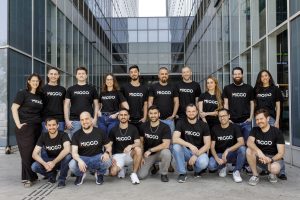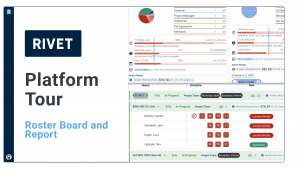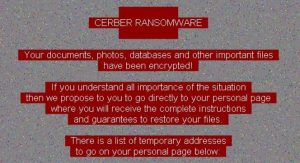Using the cloud to change business models | #vmworld
![]() In 2012, the healthcare technology and pharmaceutical provider McKesson Corp. gave itself two years and a small team to change how IT interacted with customers. It demanded a small, agile team willing to experiment with and invest in new technology. After rearchitecting the organization, McKesson landed on EMC Corp.’s enterprise hybrid cloud.
In 2012, the healthcare technology and pharmaceutical provider McKesson Corp. gave itself two years and a small team to change how IT interacted with customers. It demanded a small, agile team willing to experiment with and invest in new technology. After rearchitecting the organization, McKesson landed on EMC Corp.’s enterprise hybrid cloud.
At VMworld 2014, theCUBE brought McKesson’s VP of Cloud Integration, Peter Hunt, and EMC’s VP of Americas Services, Jay Snyder together to discuss how critical people and process are to IT transformation.
Hunt’s team had to either had to help the overall business, “make money, save money, or reduce risk.” IT, he said, is particularly well suited to help a business “speed their ability to deliver products.” His team’s charter was to come up with something completely different from the current systems in place.
They were able to recreate the IT department, and are one year in to production ability on the cloud. In their first year of working on the technology side, Hunt said that they learned “we need to focus on the people and the process to make the change.”
Snyder vehemently supported the McKesson team’s leanings: “If you do that in isolation only around the technology, you’re going to hit a wall.” In fact, Snyder reported that many of the question he’s been getting at VMworld are no longer about technology or deploying virtualization, but about “that knothole of changing the people process within the organizational structure.”
Mckenesson, a primary use case for enterprise hybrid cloud
Snyder said that EMC encourages any company to emulate McKesson’s example: “Find a greenfield environment, don’t try to intermix with the legacy complexity of the original infrastructure.” Having workloads up and running in a greenfield environment and showing success Snyder said, is a smart way to go. It shows that new forms of IT can be “a provider of services at speed.” The next step is migrating applications to the greenfield environment and turning that environment the next-generation architecture.
Read more after the video.
Optimizing the value pyramid
Interested in Hunt’s mandate from McKesson, to “Saving money, making money, or managing risk,” Vellante asked whether it is possible to optimize on all three. “You’re either going to achieve all three well,” Hunt said, “or you’re really going to be limited in your success.”
One of the things McKesson appreciates about the cloud, Hunt pointed out is the ability to standardize throughout infrastructure and therefore, deliver faster. Standardization on the product set has enabled McKesson to cut down on operational overhead, bringing down costs.
When it comes to managing risk, Snyder jumped in to say that it’s the one most commonly left out. Disaster recovery is completely different after cloud implementation, he remarked, and many companies aren’t aware of that yet. But, he says, risk management will come with time.
Cloud catalyzes business model changes
Returning to the Hunt’s value equation –“save money, make money, manage risk –” Vellante wondered whether that equation has been adopted industry-wide, catalyzed by the cloud to enable new business models.
McKesson also uses to automation to add value. When it comes to managing risk, Hunt says that automation standards have presented a new opportunity: Instead of having his security team harden each instance, he has them harden the whole template. Security is built in from day one so it can easily be scaled.
Cloud security
Hunt said that operating on the cloud, he’s been able to “reduce his world of 1,000 one-offs to six standard cases.” Automation and simplicity are paramount, he said, so that their process is repeatable.
Snyder jumped in to comment that many customers don’t have the same level of control over their templates that McKesson does: “They’ll have those templates established…but they can’t control where customers go to get the work.” That, he said, is when security gets out of control.
Customers appreciate integration, simplicity
The VMware piece, Hunt said, is very important to McKesson’s relationship with EMC: “In fact, that’s the ultimate access and portal to our services.” VCE and EMC, he added, “they get the fact that the cloud is about a business model change.”
Citing the “move afoot” within Elliot Management to split VMware and EMC, Vellante asked whether McKesson would get more value if EMC spun off VMware. “I prefer the integrated approach,” Hunt replied. His concern was that if EMC and VMware split, the experience would be “as smooth or as integrated” for McKesson.
When and how to use cloud
At McKesson, Hunt says, they use an hybrid cloud and are working to ensure that personnel and processes are all on board before provisioning externally. “It’s the cloud portal,” he said “that is most important to us.” It gives them the visibility and enables them to broker of services.
Using an ECM tool called Adaptivity, Hunt is able to figure out where workloads should be stored, whether it’s in legacy, private, or public cloud.
photo credit: pennstatenews via photopin cc
A message from John Furrier, co-founder of SiliconANGLE:
Your vote of support is important to us and it helps us keep the content FREE.
One click below supports our mission to provide free, deep, and relevant content.
Join our community on YouTube
Join the community that includes more than 15,000 #CubeAlumni experts, including Amazon.com CEO Andy Jassy, Dell Technologies founder and CEO Michael Dell, Intel CEO Pat Gelsinger, and many more luminaries and experts.
THANK YOU













